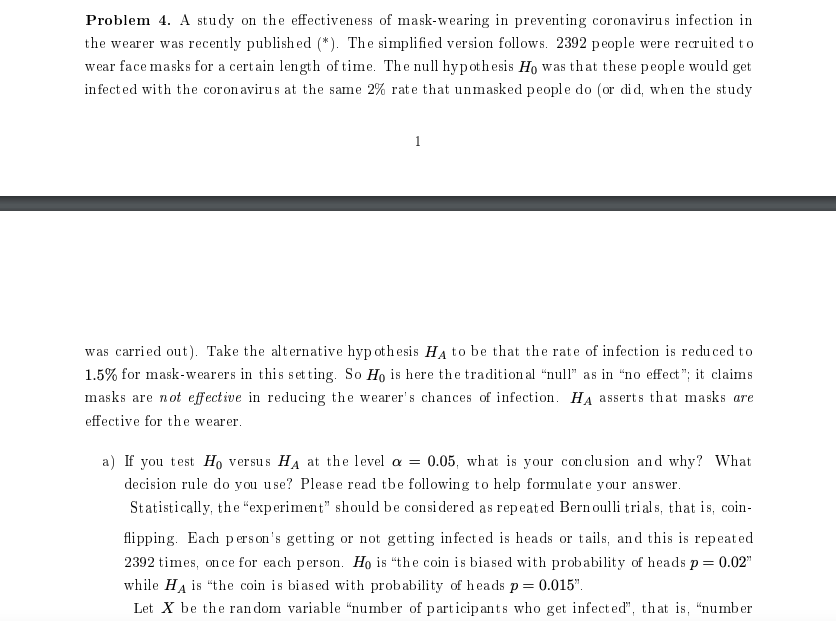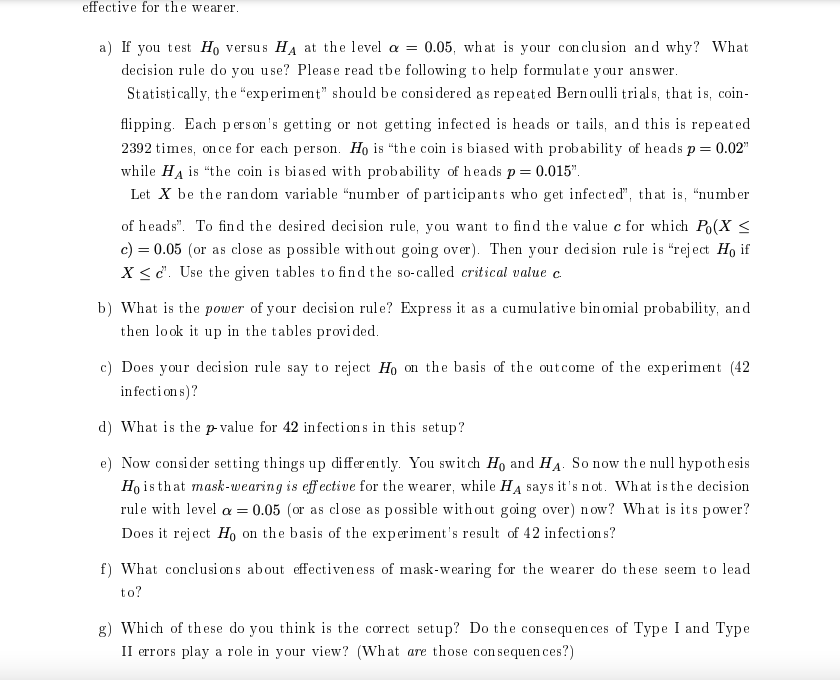Problem 4. A study on the effectiveness of mask-wearing in preventing coronavirus infection in the wearer was recently published (*). The simplified version follows. 2392 people were recruited to wear face masks for a certain length of time. The null hypothesis Ho was that these people would get infected with the coronavirus at the same 2% rate that unmasked people do (or did, when the study was carried out). Take the alternative hypothesis HA to be that the rate of infection is reduced to 1.5% for mask-wearers in this setting. So Ho is here the traditional "null" as in "no effect"; it claims masks are not effective in reducing the wearer's chances of infection. HA asserts that masks are effective for the wearer. a) If you test Ho versus HA at the level o = 0.05, what is your conclusion and why? What decision rule do you use? Please read the following to help formulate your answer. Statistically, the "experiment" should be considered as repeated Bernoulli trials, that is, coin- flipping. Each person's getting or not getting infected is heads or tails, and this is repeated 2392 times, once for each person. Ho is "the coin is biased with probability of heads p = 0.02" while HA is "the coin is biased with probability of heads p = 0.015". Let X be the random variable "number of participants who get infected", that is, "numbereffective for the wearer. a) If you test Ho versus HA at the level o = 0.05, what is your conclusion and why? What decision rule do you use? Please read the following to help formulate your answer. Statistically, the "experiment" should be considered as repeated Bernoulli trials, that is, coin- flipping. Each person's getting or not getting infected is heads or tails, and this is repeated 2392 times, once for each person. Ho is "the coin is biased with probability of heads p = 0.02" while HA is "the coin is biased with probability of heads p = 0.015". Let X be the random variable "number of participants who get infected", that is, "number of heads". To find the desired decision rule, you want to find the value c for which Po( X c) =0.05 (or as close as possible without going over). Then your decision rule is "reject Ho if X








